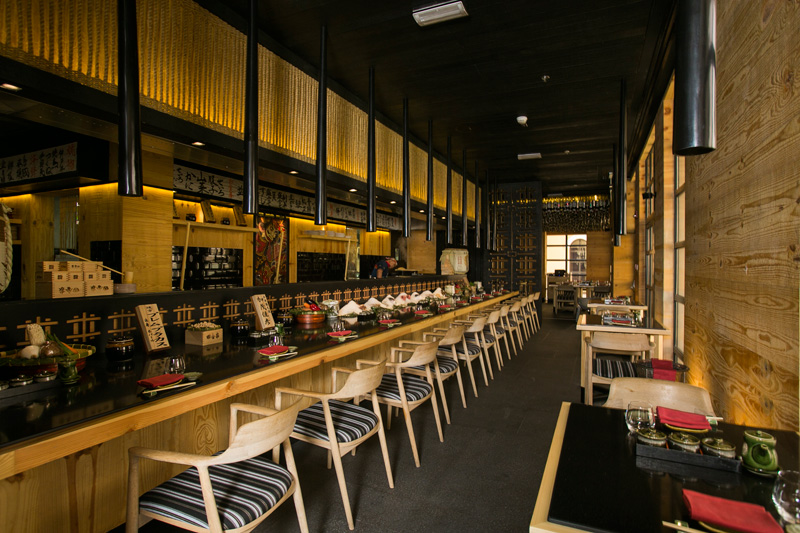 Inakaya's design features a live show kitchen set behind a long dining counter, where guests receive their dish on a long timber paddle handed to them by the chef.
Inakaya's design features a live show kitchen set behind a long dining counter, where guests receive their dish on a long timber paddle handed to them by the chef.
The worlds of design and food come together at Inakaya, a Japanese robatayaki restaurant located in the Ritz-Carlton Abu Dhabi across from the iconic Sheikh Zayed Grand Mosque and designed by Dubai-based Stickman Design.
A large theatrical show kitchen with huge robata grills and fresh ingredients on display make for a contemporary and slick interior that respects the traditional nature of Japanese cuisine.
The first Inakaya restaurant opened its doors in the heart of the Roppongi district of Tokyo, Japan, in 1970. The restaurant then expanded by opening a branch in Manhattan, New York.
For a renowned brand, the restaurant design needed to meet the high expectations of diners and be tailored to showcase the outlet’s offerings. The client brief was to create a stand-alone Japanese restaurant in line with the brand concept and, given the cuisine and the style of service, it needed to give the feel of an authentic Japanese restaurant.
“Abu Dhabi National Hotels wanted to bring the well-renowned brand of Inakaya NY and Tokyo, known for its high expectations, to the Ritz Carlton Hotel, Abu Dhabi.
"The design features a live show kitchen set behind its iconic long dining counter where guests receive their dish on a long timber paddle handed to them by the chef himself — another lovely Inakaya signature,” explains Stickman co-founder and director Marcos Cain.
Cain believes that having an authentic Japanese robata grill in the heart of Abu Dhabi was a strong enough concept to draw people in, commenting: “All the design had to do was to create an atmosphere to match the mouth-watering food served. The design of the outlet was created with an inviting, interesting yet simple atmosphere to match the delicious options available on the menu.”
To do so, the overall palette was composed of only three main finishes: the black stained oak, pine wood cladding and slate-inspired porcelain flooring. Upon entering, guests are greeted by an up-lit Samurai warrior framed by black-stained timber screens.
“Subtle movement is created overhead by the hanging folded paper feature in the ceiling inspired by the Omikuji tree — a tradition originating from Shinto shrines and Buddhist temples in Japan,” reveals Cain.
Article continues on next page

| Advertisement |








 Search our database of more than 2,700 industry companies
Search our database of more than 2,700 industry companies









